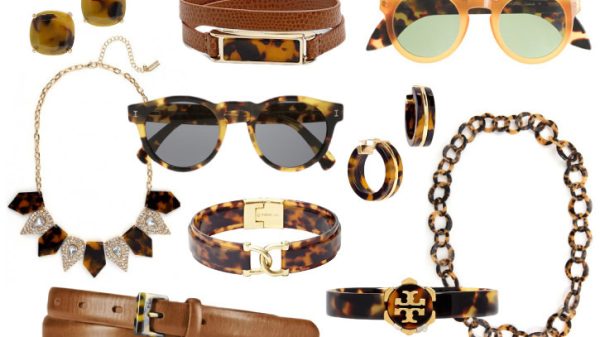The fashion industry is undergoing a significant transformation, with sustainability at the forefront of this change. Building a successful sustainable fashion brand in 2024 requires more than just a commitment to eco-friendly practices; it demands a comprehensive strategy that integrates ethical production, innovative design, and a strong brand identity. Whether you’re an emerging designer or an established brand looking to pivot, these essential tips will guide you in creating a sustainable fashion brand that resonates with conscious consumers.
1. Define Your Sustainability Mission
The foundation of any sustainable fashion brand starts with a clear mission statement. This should outline your commitment to sustainability and ethical practices. Ask yourself: What environmental and social issues does your brand aim to address? Your mission should be specific, actionable, and align with your brand values. This clarity will not only guide your business decisions but also communicate your brand’s purpose to your audience.
Example: If your brand focuses on reducing waste, your mission could emphasize zero-waste production methods, such as upcycling or using deadstock fabrics.
2. Source Sustainable Materials
The materials you choose are critical to your brand’s sustainability. Opt for eco-friendly fabrics such as organic cotton, hemp, Tencel, and recycled materials. These fabrics are less harmful to the environment compared to conventional textiles. Additionally, consider the entire lifecycle of the materials, from production to disposal. For example, biodegradable fabrics are a great choice as they break down naturally and have a lower environmental impact.
Tip: Establish relationships with suppliers who prioritize sustainable practices and transparency. This ensures that your supply chain aligns with your sustainability goals.
3. Implement Ethical Production Practices
Sustainability goes hand-in-hand with ethical production. This means ensuring that everyone involved in your supply chain, from farmers to factory workers, is treated fairly and works in safe conditions. Prioritize working with manufacturers who adhere to fair labor practices and offer fair wages.
Considerations:
- Conduct regular audits of your supply chain to ensure compliance with ethical standards.
- Partner with local artisans and support traditional craftsmanship, which can also reduce your carbon footprint.
4. Embrace Transparency
Transparency is key to building trust with your customers. Clearly communicate your brand’s sustainability practices, challenges, and progress. This could include details about where your materials are sourced, how your products are made, and what steps you’re taking to minimize your environmental impact. Customers are more likely to support brands that are open about their processes and committed to continuous improvement.
Actionable Steps:
- Create a dedicated section on your website that explains your sustainability practices.
- Regularly update your customers on new initiatives, challenges, and successes through blogs, social media, or newsletters.
5. Focus on Quality and Longevity
Fast fashion’s throwaway culture is one of the biggest contributors to environmental degradation. Combat this by designing high-quality, durable products that are built to last. Encourage your customers to buy less but invest in pieces that will stand the test of time. This approach not only reduces waste but also reinforces the value of your brand.
Strategy:
- Offer repair services or guides to help customers maintain their garments.
- Design timeless pieces that won’t go out of style, reducing the need for frequent replacements.
6. Minimize Waste and Maximize Efficiency
A successful sustainable fashion brand minimizes waste at every stage of production. Implement zero-waste design techniques, such as pattern-making that uses every part of the fabric. Consider repurposing scrap materials into new products or accessories.
Ideas:
- Create limited-edition collections using leftover fabrics or upcycled materials.
- Explore take-back programs where customers can return old garments for recycling or resale.
7. Cultivate a Strong Brand Identity
In a competitive market, your brand identity sets you apart. Your commitment to sustainability should be central to this identity, influencing everything from your logo design to your marketing strategy. Develop a consistent brand voice that reflects your mission and values, and use it to engage with your audience across all platforms.
Marketing Tips:
- Leverage storytelling to highlight your brand’s journey toward sustainability.
- Collaborate with influencers or ambassadors who share your commitment to ethical fashion.
8. Engage and Educate Your Audience
Educating your customers about the importance of sustainable fashion can create a loyal customer base that values your brand’s mission. Use your platform to raise awareness about environmental and social issues related to the fashion industry. Provide practical tips on how consumers can make more sustainable choices.
Content Ideas:
- Write blog posts or create videos on topics like the benefits of sustainable fabrics, the impact of fast fashion, or how to build a capsule wardrobe.
- Host events or webinars on sustainability in fashion.
9. Innovate Continuously
Sustainability in fashion is an evolving field, with new technologies and practices emerging regularly. Stay ahead by continuously innovating and adapting your practices. This might include exploring new sustainable materials, investing in technology to reduce waste, or finding ways to further reduce your carbon footprint.
Suggestions:
- Keep up with the latest developments in sustainable fashion through research, industry reports, and attending relevant conferences.
- Experiment with new production techniques, such as 3D printing or digital fashion, which can reduce material waste.
10. Build a Community
A successful brand is more than just its products; it’s a community of like-minded individuals who share your values. Foster a sense of community by engaging with your customers, listening to their feedback, and encouraging them to share their sustainable fashion journeys.
Engagement Strategies:
- Create a customer loyalty program that rewards sustainable practices, like recycling old garments or buying second-hand.
- Use social media to highlight your customers’ stories and promote user-generated content.
















































